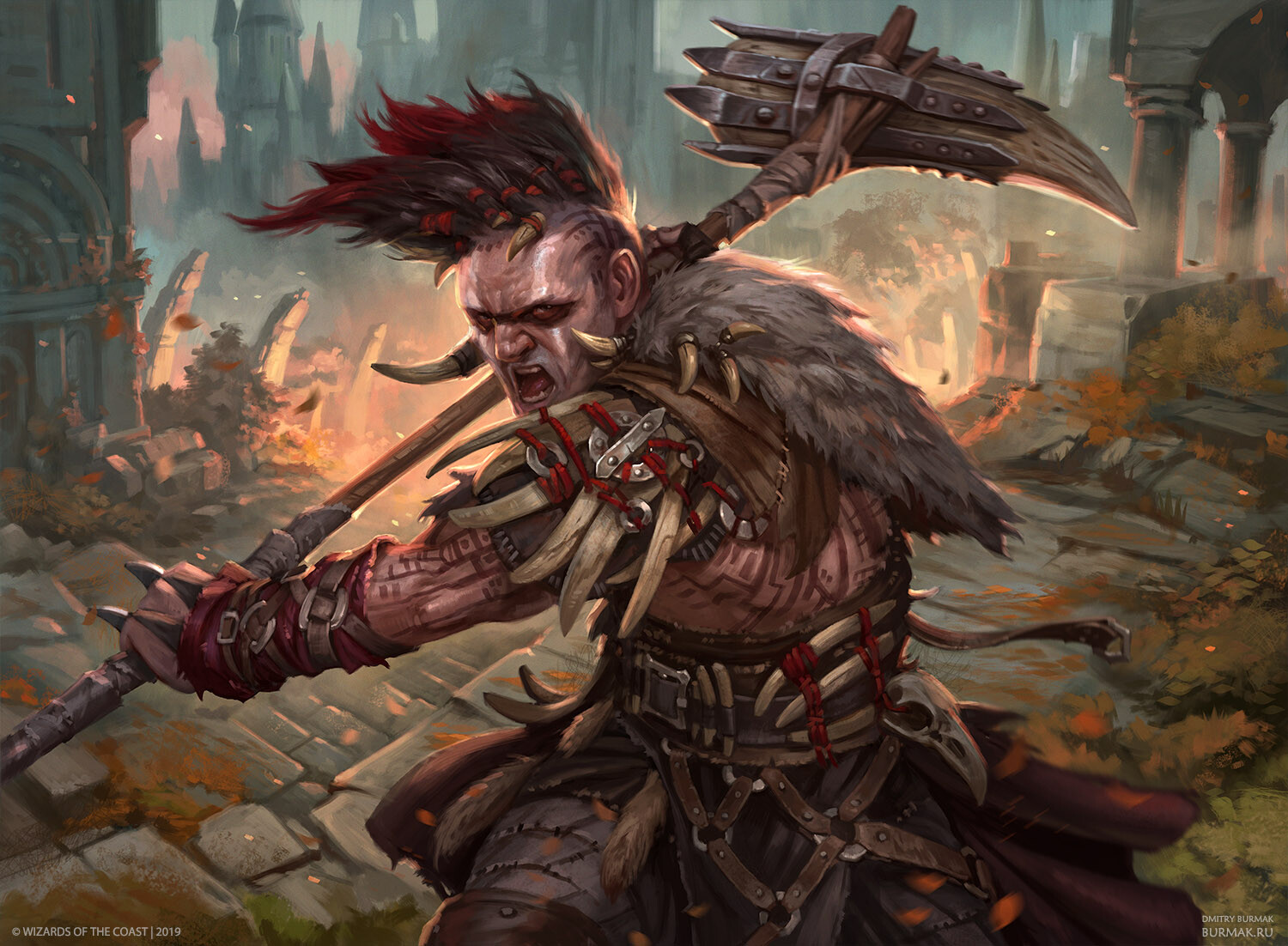
In Magic: The Gathering (MTG), each of the five colors represents unique philosophies, mechanics, and strategies. Red and Green, though adjacent in the color pie, differ significantly in their approach to gameplay. The discussion about it after the cut.
Below is a breakdown of each color’s essential playstyle, key mechanics, and how they interact both individually and together.
1. Red’s Essential Playstyle
Red embodies chaos, passion, and freedom. Its gameplay is fast-paced and aggressive, aiming to win the game quickly by overwhelming the opponent with direct damage and aggressive creatures. Key aspects of Red’s strategy include:
- Aggression and Speed: Red decks often focus on early-game dominance by playing fast creatures with haste, enabling them to attack immediately. It excels at dealing a lot of damage quickly, making it difficult for opponents to stabilize. This makes red synonymous with aggressive archetypes like “Burn” or “Mono-Red Aggro.”
- Direct Damage: One of Red’s signature mechanics is dealing damage directly to players and creatures through burn spells like Lightning Bolt or Shock. Red’s philosophy is to bypass traditional combat when necessary and simply burn down opponents’ life totals.
- Sacrifice for Speed: Red is willing to trade long-term resources for short-term advantages. Cards like Cavalcade of Calamity or Reckless Abandon allow Red players to sacrifice creatures or cards to achieve immediate bursts of damage.
- Chaos and Unpredictability: Red often introduces chaos through cards that create random effects. Cards like Chaos Warp or Goblin Game embrace uncertainty, reflecting Red’s love for unpredictability.
- Weaknesses: While fast and aggressive, Red’s strategy can falter in longer games, as it lacks card draw and board control in the long term. Red decks are often “all-in,” meaning if they lose momentum, recovery can be difficult.
2. Green’s Essential Playstyle
Green, on the other hand, focuses on growth, nature, and raw strength. It seeks to overpower opponents through massive creatures and mana ramp, embodying patience and balance with nature.
- Mana Ramp: Green excels at generating additional mana, giving players the ability to cast expensive spells early in the game. Rampant Growth, Cultivate, and Llanowar Elves are examples of Green’s focus on increasing mana resources, allowing for big plays that overwhelm opponents.
- Large Creatures and Trample: Green’s signature strength lies in its ability to cast large creatures that dominate the battlefield. These creatures often have abilities like trample or reach, making them difficult to block or evade. Cards like Craterhoof Behemoth or Steel Leaf Champion epitomize this strategy by pushing through damage even when blocked.
- Creature Synergy: Green focuses heavily on the synergy between creatures, with cards that provide buffs or abilities to creatures on the battlefield. Effects like Overrun or Beast Whisperer allow Green decks to create a snowballing advantage through consistent creature play.
- Natural Magic and Removal: Green doesn’t rely on conventional destruction like Red or Black but removes threats through spells like Naturalize (destroying artifacts and enchantments) or creature-based fight mechanics (Prey Upon), allowing its larger creatures to take down opposing threats.
- Weaknesses: Green struggles against control decks due to its reliance on creatures. Board wipes or targeted removal can leave Green vulnerable, as it doesn’t have much in the way of card draw outside of specific creature synergies. Its lack of direct interaction with the opponent’s hand or spells also limits its versatility.
3. Red-Green Combo (Gruul)
When Red and Green are combined, the result is a color pair that emphasizes raw power and speed. Gruul decks often focus on maximizing the aggressive creature strategy of Green while benefiting from Red’s burn and direct damage to finish off opponents quickly. Key strategies for Red-Green decks include:
- Aggressive Creatures + Burn: Gruul decks will often play large, fast creatures (like Ghor-Clan Rampager) and combine that with Red’s direct burn spells to control the battlefield or push through final damage to win.
- Ramp into Aggression: Red-Green ramps up mana using Green’s abilities, then uses that mana to cast powerful creatures or massive burn spells. This combination allows Gruul to start with aggression and scale into bigger threats as the game progresses.
- Creature Buffs and Synergies: Cards like Atarka’s Command or Domri, Anarch of Bolas allow Red-Green to synergize creature growth with aggressive, immediate action. These strategies lead to Gruul’s hallmark of tempo advantage, where creatures are rapidly deployed and quickly buffed for optimal damage.
- Weaknesses: Gruul’s reliance on creatures means it struggles when faced with removal-heavy or control strategies. If the opponent manages to stabilize or outlast the initial aggressive push, Gruul can run out of steam.
Conclusion
Red and Green in Magic: The Gathering represents contrasting yet complementary philosophies: Red’s chaos and speed clash with Green’s growth and raw power. Red rushes to victory through aggression and burn, while Green prefers to amass mana and creatures to overpower its opponents.
Together, they form Gruul, a powerhouse combination that blends Red’s aggressiveness with Green’s creature dominance. Each color has strengths and weaknesses, but when played strategically, they can be immensely powerful, especially in the hands of an experienced player.
